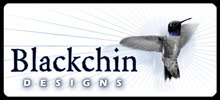At the time, (around 2003), I had no idea how dynamic and
fast-changing birding knowledge was, and I figured the dog-eared book that my
parents had picked up on a whim many years earlier – which I now realize was
the inaugural edition of the National Geographic guide from 1983 – was, like my
high school algebra texts, a source of immutable truths. Little did I know that
everything from the genetic relationships among birds to their common names to
their ranges and populations was in constant flux. I was puzzled as to why people called those
gorgeous white raptors in our area “White-tailed Kites” when the guide said
clearly that they were “Black-shouldered Kites.”
I still have that guide, along with many other, newer ones –
Kaufman, Sibley, Crossley, and several other, more specialized guides. So when I was given the opportunity to check
out the newest update of the National Geographic guide, I couldn’t resist
comparing it to the original – the book that helped launch my life as a birder.
Both the similarities and differences between the original
and latest update are striking: the same signature Bald Eagle on the cover,
quite a few of the same illustrations, and even same descriptions. Both list
the Ivory-Billed Woodpecker as “probably extinct,” but for strikingly different
reasons. (The description of its range and distribution in the new guide will
be heartbreaking to anyone who rejoiced at its putative rediscovery a few years
back.) But new illustrations, very much in the same style as the older ones,
also abound, as well as significantly expanded or revised descriptions of
certain birds. (The description of White-crowned Sparrows in the 6th
edition, for instance, goes into helpful detail about their various subspecies,
their songs, and distribution, which the original, shorter description lacked.)
Another useful detail the guide includes is an index of
subspecies range maps – this can be a great benefit to those who spend a lot of
time birding on the road.
More striking to me was the extremely liberal definition of
“birds of North America” used in the book. Flipping through it, one sees dozens
of accidental and even extinct species not found in other North American field
guides. I personally appreciated these
graphic reminders that North America (or parts of it, at least) is closely
linked, biologically and geographically, to the far corners of Asia and
Northern Europe, and for any enthusiastic birder, this feature will be a
tantalizing reminder that any trip to the field can bring unexpected surprises.
But for beginners or others looking for a straight-ahead quick reference to
birds one is likely to encounter on a typical trip, this expanded inventory
could be a needless distraction.
A characteristic feature of any field guide is the front
matter – all the stuff the guide presents before actually getting to the birds
themselves. Kaufman’s useful pocket guide, for instance, has a friendly, simple
preface that captures a “birding for everyone” vibe, and the first words in the
preface of Crossley’s graphically rich guide are “I don’t like text,” which
tells you everything you need to know about the orientation of the rest of the
book. The National Geographic guide strikes an accessible, yet serious tone in
its front matter: the brief descriptions of bird classification, ranges, and
field marks are written to be understandable to beginners, but include enough
information (such as a two-page illustrated spread of labeled head, wing, and
body feather tracts) to be a useful reference for more experienced birders as
well.
Any review of a field guide is supposed to end up with the
answer to the question “so, how does this rank among the other guides for the
same area?” I really hate answering this question because I don’t have a single
favorite North American field guide – like many birders, I like having an
assortment of them for different purposes: Kaufman to keep in my back pocket
for quick reference, Sibley to keep in my car for more comprehensive ID checks,
and Crossley to keep at home to study before and after looking for a new bird.
Also, I often find myself needing more than one set of illustrations to ID a
bird definitively, especially if it’s molting or in some transitional plumage.
The new National Geographic guide, for me, falls into the “keep in the car”
category – a great combination of quick reference and comprehensive description
that will be a useful addition to my arsenal of references.





















